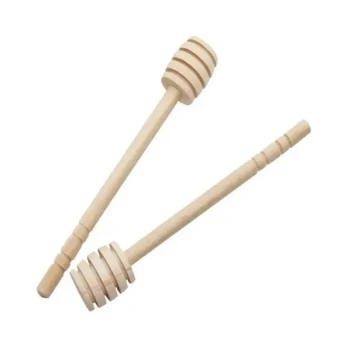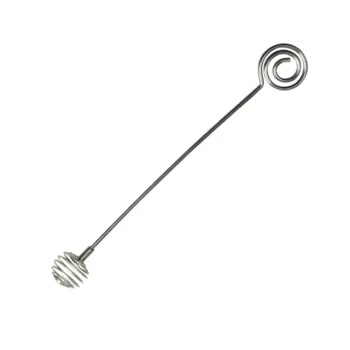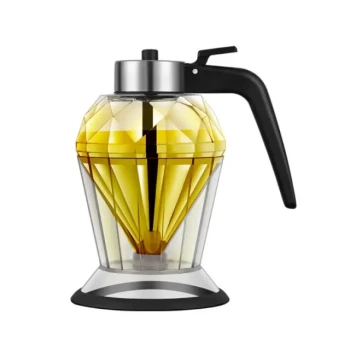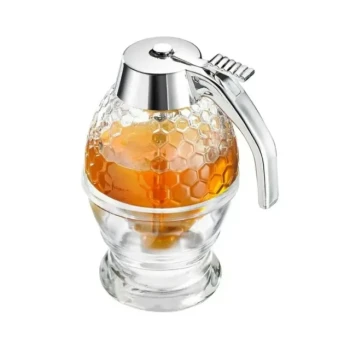At its core, contamination in filled honey stems from two primary points of failure in the production line. These are the inadequate filtration of the raw honey itself and the presence of unclean surfaces on the processing and filling machinery.
The immediate causes are simple, but they point to a deeper need: true quality control requires viewing the entire bottling process as a system where every surface and every step is a potential contamination risk that must be actively managed.
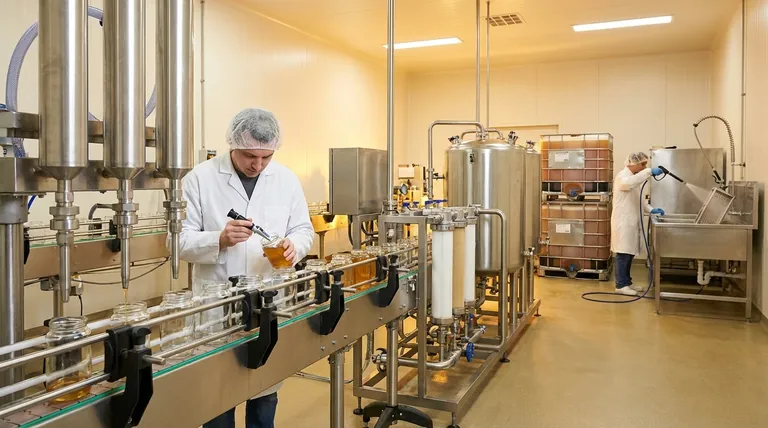
The Contamination Pathway: From Raw Honey to Sealed Jar
To effectively prevent contamination, you must understand where and how foreign materials or microbes can be introduced during the journey from the bulk container to the final sealed product.
Source 1: Insufficient Raw Honey Filtration
Raw honey, direct from the hive, naturally contains various physical particles. These include bits of beeswax, propolis, and even fragments of bees.
Effective filtration is the critical first step to remove these physical impurities. When this process is incomplete, these particles are carried through into the final product, acting as direct physical contaminants.
Source 2: Unsanitary Equipment Surfaces
Every surface the honey touches after filtration is a potential source of contamination. This includes holding tanks, pumps, piping, and especially the complex components of the filling nozzles.
If these surfaces are not meticulously cleaned and sanitized, they can harbor residues of old honey or cleaning agents. These residues can introduce microbial contaminants like yeasts and bacteria, which can compromise the honey's stability and safety.
Common Pitfalls and Hidden Risks
Merely focusing on basic filtration and a quick rinse is not enough. Several common oversights can undermine an otherwise clean process.
Cross-Contamination from the Environment
The processing environment itself can be a source of contamination. Airborne dust, yeast spores, or particles from nearby operations can settle into open tanks or onto equipment surfaces.
Personnel hygiene is also a factor. Improperly sanitized hands or tools can easily transfer contaminants into the product stream.
Compromised Packaging Materials
The containers and lids are the final barrier. If jars or caps are not stored in a clean, dry environment, they can collect dust or moisture.
Introducing honey into a contaminated container negates all previous efforts to maintain purity. This is one of the most common and easily avoidable points of failure.
Improper Cleaning Protocols
The risk from cleaning is twofold. First, an inadequate cleaning cycle fails to remove honey residue, which can foster microbial growth.
Second, using aggressive cleaning agents without a thorough, validated rinsing procedure can leave chemical residues in the system. These chemicals can then leach into the next batch of honey, creating a chemical contamination hazard.
Creating a Robust Control Strategy
Your goal determines where you should focus your most stringent controls. A proactive strategy is always more effective than a reactive one.
- If your primary focus is product purity and clarity: Implement a multi-stage filtration system and conduct regular visual checks throughout the process.
- If your primary focus is food safety and shelf life: Prioritize rigorous, validated sanitation protocols for all equipment, with a focus on eliminating microbial growth.
- If your primary focus is brand reputation: Combine all of these elements—filtration, sanitation, and environmental controls—into a comprehensive quality assurance program.
Ultimately, producing clean, high-quality filled honey is a direct result of maintaining absolute control over your entire production environment.
Summary Table:
| Contamination Source | Key Risk | Prevention Focus |
|---|---|---|
| Insufficient Filtration | Physical particles (wax, propolis) | Multi-stage filtration systems |
| Unsanitary Equipment | Microbial growth (yeasts, bacteria) | Rigorous, validated cleaning protocols |
| Environmental Factors | Airborne dust, cross-contamination | Controlled environment, personnel hygiene |
| Compromised Packaging | Introduction of contaminants post-filling | Clean, dry storage for jars and lids |
Protect Your Honey's Purity and Your Brand's Reputation
Contamination risks can undermine your product quality and customer trust. HONESTBEE supplies commercial apiaries and beekeeping equipment distributors with the reliable supplies and machinery needed to build a contamination-free production line.
From industrial-grade filters to sanitation-compatible equipment, we provide the tools for absolute control from hive to jar.
Contact our experts today to discuss how our wholesale-focused solutions can strengthen your quality assurance program.
Visual Guide
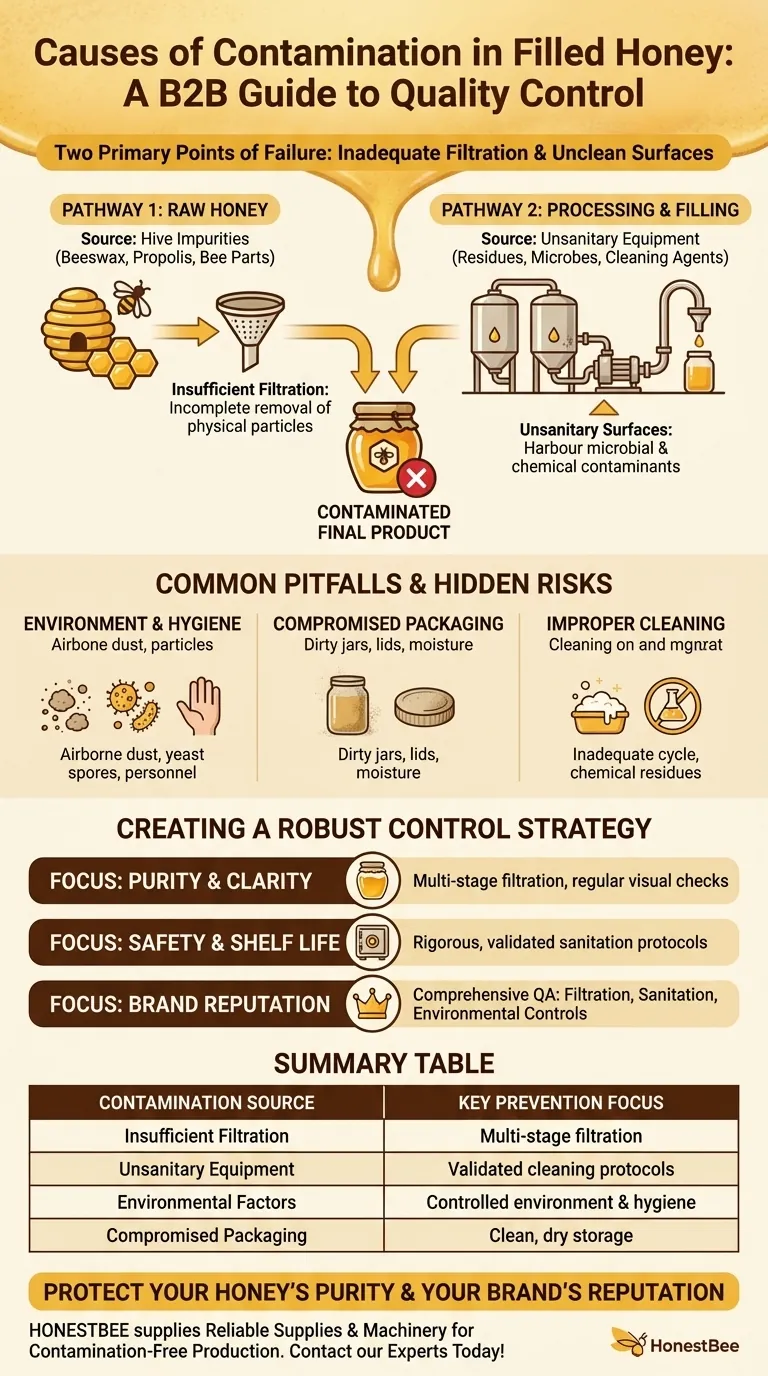
Related Products
- Precision Honey Refractometer Instrument for Quality Assessment
- Easy Use Manual Stainless Steel Honey Press for Honey Comb
- Natural Wood Honey Dipper for Tea Coffee and Desserts
- Modern Honeycomb Pattern Wooden Honey Dipper for Stirring and Drizzling
- 10L Stainless Steel Electric Honey Press Machine
People Also Ask
- Why is a honey refractometer considered essential for commercial beekeepers? Ensure Honey Quality and Profitability
- What are the benefits of using a Pocket Digital Honey Refractometer? Achieve Precision & Speed in Honey Quality Control
- What are the features of the Standard Refractometer for honey moisture content? Essential Tools for Quality Control
- What are the key steps to using a honey refractometer? Ensure Honey Quality & Prevent Fermentation
- Why is a honey refractometer important for beekeepers? Ensure Quality and Prevent Fermentation


